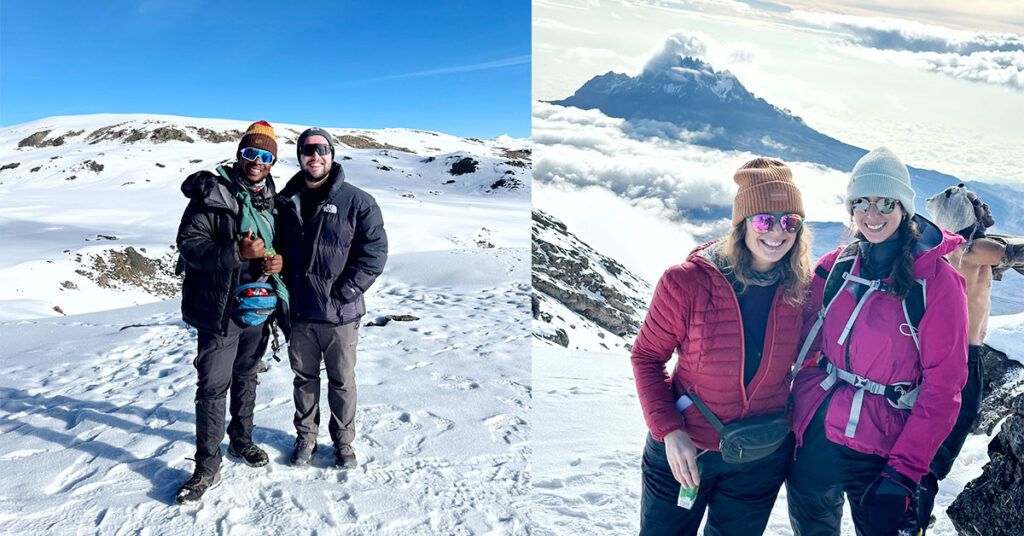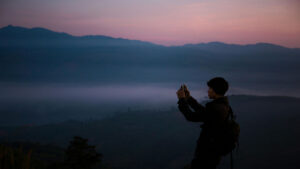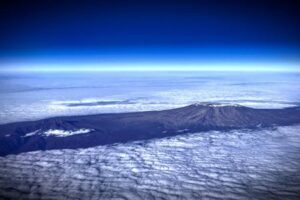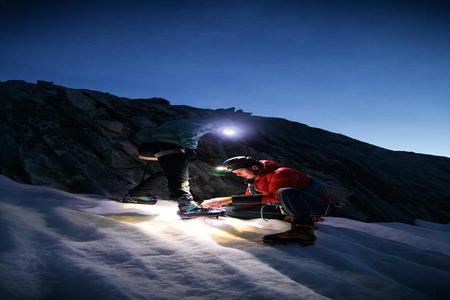Table of Contents
Kilimanjaro Summit Day Gear Guide | Kili Quests
Summit day on Mount Kilimanjaro is the toughest — and most unforgettable — part of your trek. You’ll begin in the dark, trek through freezing conditions, and reach the top of Africa by sunrise. The key to success? Proper gear, pacing, and mental strength.
At Kili Quests, we help you prepare every step of the way. This guide covers all essential gear for summit night, including tips to help you stay warm, safe, and focused until you reach Uhuru Peak.
Need the full list? Check our Kilimanjaro Packing List to make sure you’re ready from headlamp to hiking boots.

Summit Day Essentials: What to Pack
Summit attempts begin around midnight. You’ll need gear that keeps you warm, visible, hydrated, and energized until sunrise.
1. Layered Clothing System
Dress in 3 layers so you can adjust to shifting temperatures:
- Base Layer: Moisture-wicking top and bottom (synthetic or merino wool)
- Mid Layer: Fleece or light down jacket
- Outer Shell: Waterproof, windproof jacket and pants
Accessories:
- Insulated gloves (preferably waterproof)
- Warm hat or beanie
- Neck gaiter or buff
Check out our Night Temperatures Guide — it often drops below freezing on summit night!
2.Proper Footwear
You’ll be walking over rocks, scree, and possibly snow:
- Waterproof hiking boots (well broken-in)
- Warm socks (preferably merino wool)
- Optional gaiters to keep snow or dirt out
3. Headlamp + Extra Batteries
You’ll be climbing in complete darkness for the first 5–6 hours:
- Strong headlamp with long battery life
- Bring spare batteries (cold can drain them faster)
4. Water + Hydration System
Hydration is critical, even in the cold:
- Water bottles or insulated hydration bladder
- Electrolyte tablets or powders
- Prevent freezing: keep bottles upside down or close to your body
5. Sun Protection (Yes, Even at Night)
Sunrise at high altitudes brings intense UV exposure:
- Sunscreen for your face, neck, ears
- UV-blocking sunglasses (especially with snow glare)
6. Snacks & Energy Bars
Summit day burns serious calories:
- Trail mix, granola bars, chocolate, energy chews
- Easy to grab and digest on the move
Stay fueled — these small snacks can make the difference between turning back and reaching Uhuru Peak.
7. Trekking Poles
Helpful for both the ascent and descent:
- Lightweight, adjustable poles
- Great for balance and protecting knees on steep slopes

Summit Day Tips for Success
1. Pace Yourself
- Don’t rush — summit day is a marathon, not a sprint
- Take small, slow steps and rest regularly
2. Stay Positive
- Break the climb into mental checkpoints (e.g., “just reach Stella Point”)
- Motivate teammates and visualize the summit
Mental strength is just as important as physical endurance.
3. Know Your Body
- Be aware of altitude sickness signs (nausea, headache, dizziness)
- Tell your guide immediately if you feel unwell
It’s okay to turn back if needed — safety always comes first
Bonus Tip: Power Up Your Devices
- Bring a power bank or solar charger
- Keep electronics insulated from cold
Learn more: Charging Devices on Kilimanjaro
Ready for the Top?
Summit day is the ultimate moment of your Kilimanjaro trek. With the right gear and mindset, you’ll be prepared to face the cold, the altitude, and the challenge — and stand proudly on Africa’s highest point.At Kili Quests, we help you gear up, pace smart, and summit strong.
Ready to conquer Kilimanjaro? Contact us to plan your trek and get expert advice from our team!
Related Articles

How to Get Internet on Mount Kilimanjaro | Connectivity Tips
December 13, 2024
No Comments
Table of Contents Internet Access on Kilimanjaro: What to Know | Kili Quests Wondering if you can stay connected during your Mount Kilimanjaro trek?Whether

All-Inclusive Kilimanjaro Tour: Meals, Gear, Guides & More
April 9, 2025
No Comments
Table of Contents Kilimanjaro Climbing Package: What’s Included | Kili Quests Climbing Mount Kilimanjaro is one of the most rewarding adventures on earth —

Kilimanjaro Gear Rentals: What You Need & Where to Get It
April 10, 2025
No Comments
Table of Contents Don’t Have Hiking Gear? Here’s How to Rent Equipment for Your Kilimanjaro Trek | Kili Quests No gear? No problem. You don’t


